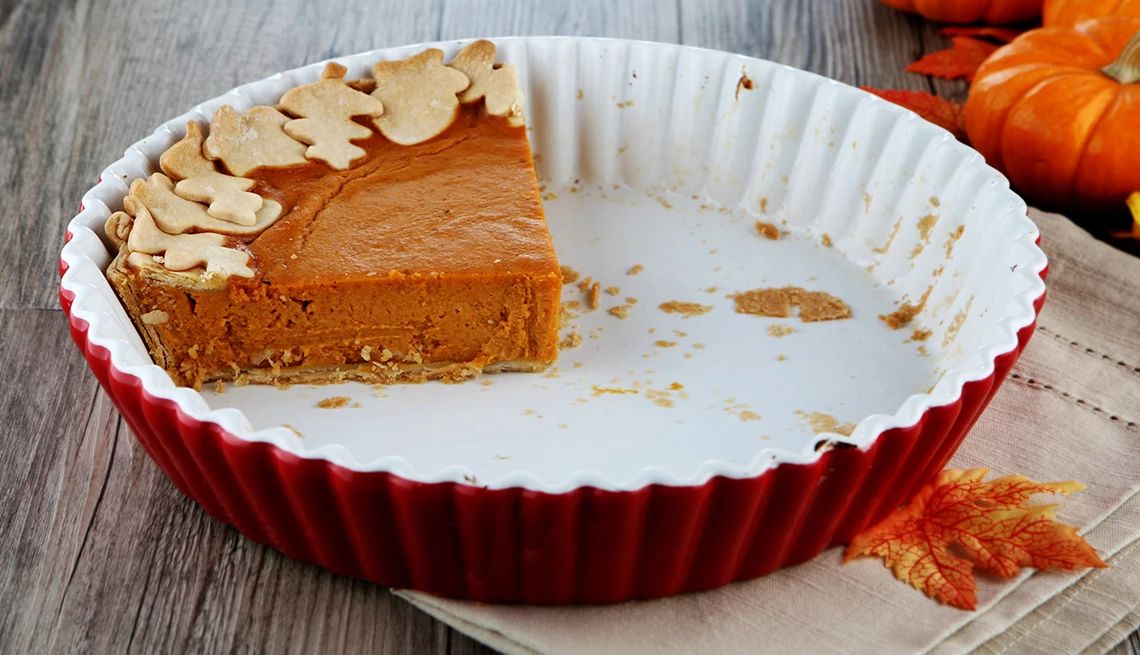AARP Hearing Center


Sometimes the best parts of festive holiday meals are the leftovers.
It’s great to pull them out for a delicious meal later, to use that turkey carcass to make soup or to let the surplus inspire a whole new dish. With grocery prices on everyone's mind, using extra food instead of throwing it out is not only good for your budget but it also reduces waste.
However, it’s crucial to handle leftovers safely to avoid foodborne illness and spoilage. Read on for tips from chefs and food safety experts on optimal storage practices, smart ways to transform leftovers, and safe reheating methods, ensuring you can enjoy every last bite without compromising on safety
Don’t let food sit out for too long
More on what’s safe to eat and what’s not
With so much going on around the holidays, it can be overwhelming to also have to worry about food safety. Fortunately, there are many resources to help.
- Download the USDA FoodKeeper app. It breaks down how long foods in different categories can be stored. You can even add a calendar alert to remind you when to discard leftovers.
- Food safety questions? Call the USDA Meat and Poultry Hotline at 888-MPHotline (888-674-6854) or chat live, in English or Spanish, with a food safety specialist at ask.usda.gov.
One of the biggest issues with holiday meals, especially Thanksgiving dinner, is that the food tends to sit out, making it risky to consume later. “It shortens the length of time it will stay good once you refrigerate it,” says Chicago chef and restaurateur Brian Jupiter.
After about two hours at room temperature, food quality starts to decline. The amount of potentially illness-causing bacteria in food can double in as little as 20 minutes. As a rule of thumb, bacteria grow rapidly between 40 F and 140 F — the danger zone, according to the U.S. Food and Drug Administration (FDA).
Even though it may be fun to watch football and graze all day, unless you are keeping your cold food on ice or your hot food consistently hot, you run the risk of getting sick.
Leftovers will generally last in the fridge for three to four days, but that’s not the case if the food has been sitting out all day.
“If anything sat out for hours or traveled long distances home with you after the meal, it is best to consume it within the next day or two,” says Olivia Roszkowski, chef-instructor at the Institute of Culinary Education.
Throw these items away
Be especially suspicious of those grazing platters people nibble on all day long. Things like cheese plates, seafood platters and even crudités will have lots of hands touching them throughout the day, increasing the risk of contamination. Raw seafood and softer, more perishable cheeses like brie or blue cheese should be disposed of, no matter what. Dips can oxidize or form a skin, and even if they are still safe to eat, they likely won’t taste as good when they are leftovers.
Keep in mind that you can’t see or smell foodborne illnesses, so if in doubt, throw the food out.





































































More From AARP
Holiday Food Traditions: Test Your Knowledge
How well do you know culinary traditions and customs?
How to Cope When Old Family Dynamics Disrupt Holiday Visits
Therapists’ advice on avoiding conflict